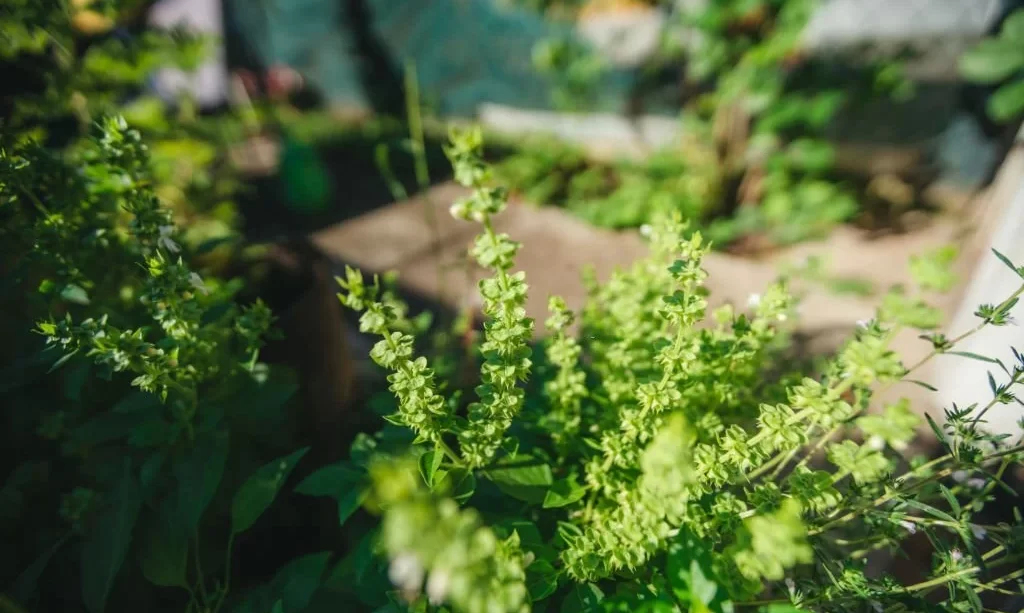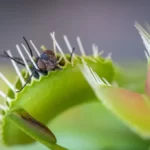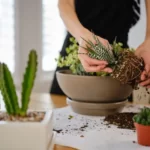Basil, with its delightful aroma and versatile culinary uses, is a favorite herb in many gardens. While it’s easy to buy basil seeds or plants from a nursery, there’s something immensely satisfying about harvesting your own basil seeds. Not only does it save you money, but it also allows you to preserve your favorite basil varieties for future seasons. In this guide, we’ll walk you through the art of harvesting basil seeds, starting with the crucial first step: selecting the right basil plants.
- Organic edible basil seeds: Zen Basil Seeds are very nutritious organic edible basil seeds! 2 tbs of our organic seeds equals 15g of fiber. Simply add to smoothies, oatmeal & yogurt, salads, sauces, soups, jams, & even baked goods for extra nutrition in your daily diet. Enjoy a delicious paleo vegan gluten-free keto drink or snack!
- More fiber than chia: This superfood is known for its health-promoting properties & its natural source of fiber, vitamins, electrolytes, & antioxidants. In a gram to gram comparison with chia seeds, Zen Basil seeds have confirmed lab results with nearly 2x more fiber, potassium, calcium, & iron! Our seeds are rich in prebiotics, polyphenols, & omega 3 & 6!
- Highest quality: We source the high quality, sustainably grown, organic basil seeds. This superfood is high in fiber. It contains vitamin k & potassium as well. Enjoy all the benefits of adding the most important part of the basil plant, the seed, to your diet.
- California made: Our seeds are packed in California. Our seeds that are perfect for keto snacks are regulated by the CA dept. of health food services, kosher certified, & certified organic by California certified organic farmers.
Selecting the Right Basil Plants
Choosing the correct basil plants for seed harvesting is the foundation of a successful endeavor. Here’s what you need to consider:
- Plant Health: Opt for basil plants that are robust and healthy. Look for vibrant green leaves, sturdy stems, and no signs of disease or pest infestations. Healthy plants are more likely to produce viable seeds.
- Variety: Basil comes in numerous varieties, each with its unique flavor and aroma. Select the basil variety you wish to harvest seeds from. Common types include sweet basil, Thai basil, and Genovese basil, among others.
- Maturity: Basil plants need to reach maturity before they produce seeds. This typically occurs after the plant has been growing for several months. Look for basil plants with well-established growth, including flowering.
- Flowering Stage: Examine the basil plant’s flowering stage. Basil produces small, delicate flowers that eventually turn into seed clusters. Select plants that have developed flower spikes but haven’t yet gone to seed.
- Desirable Traits: If you’re interested in preserving specific traits of a basil plant, such as its flavor, aroma, or appearance, choose plants that exhibit those traits. This ensures that the harvested seeds will produce basil plants with similar characteristics.
- Single Variety: If you’re growing multiple basil varieties, keep in mind that basil can cross-pollinate between different varieties. To maintain the purity of a specific basil variety, consider isolating plants of that variety from others during the flowering and seed-setting stages.
Selecting the right basil plants is the crucial first step in the process of harvesting basil seeds. Healthy, mature, and well-chosen basil plants will provide you with high-quality seeds that you can save and use in your garden for seasons to come.
Gathering Your Materials
Before you embark on the journey of harvesting basil seeds, it’s essential to gather the necessary materials. Here’s a list of items you’ll need for a successful seed-harvesting adventure:
- Scissors or Shears: Use sharp scissors or garden shears to cut the seed clusters from the basil plants. Make sure they are clean and in good working condition.
- Paper Bags: Paper bags are ideal for collecting basil seed clusters. They allow for airflow, which is crucial during the drying process. Ensure the bags are clean and dry.
- Clean Containers: You’ll need clean containers or envelopes for storing the dried basil seeds once the harvesting is complete. These containers should be airtight to prevent moisture and air exposure.
- Labels: Labeling is crucial for keeping track of the basil variety, harvest date, and any other relevant information. Use waterproof labels or write on containers with a permanent marker.
- Gloves (Optional): Wearing gloves can help protect your hands and prevent damage to delicate basil seed clusters, especially if you’re handling multiple plants.
- Pruning Snips (Optional): While scissors or shears work well, some gardeners prefer the precision of pruning snips for harvesting basil seeds.
- Clean Work Surface: Ensure you have a clean and spacious work surface for sorting, processing, and labeling the harvested seeds.
- Drying Area: Prepare a dry and well-ventilated area for drying the basil seed clusters after harvesting.
Now that you have your materials ready, let’s move on to the exciting part of harvesting basil seeds.
- Durable Strong Stainless Steel Rust Resistant Blades: Forging press manufacturing process enables high-density steel that makes 3 times harder than normal stainless steel and are smoother cutting.
- Ultra Sharp Scissors All Purpose: Easy for cutting more than 16 layers of fabrics. Ideal for sewing, tailoring, quilting, dressmaking, cutting patterns, alterations, hand craft, home and office use etc.
- Multi-color Titanium coating blades. They are strongly resistant to rusting and to adhensives such as glue and tape, making them ideal for almost any kinds of tasks.
- Comfort Grip Handle: Ergonomic design for precision control and max comfort.
- Every Product is independently tested and selected to ensure the performance you expect. The result is a quality item backed by our commitment to your satisfaction.
Harvesting Basil Seeds
Harvesting basil seeds can be a rewarding process, allowing you to preserve the essence of your favorite basil varieties. Here’s how to do it:
- Choose the Right Time: Wait until the basil plants have reached the flowering stage. This is when the basil plants will produce seed clusters. The flowers will have small, green seed pods at their base.
- Select Seed Clusters: Inspect your basil plants and identify the seed clusters. These clusters typically form after the flowers have bloomed and turned into small pods. Each cluster contains multiple seeds.
- Use Clean Tools: Ensure your scissors or shears are clean and sharp. This prevents damage to the seed clusters and reduces the risk of disease transmission.
- Cut the Clusters: Carefully cut the seed clusters from the basil plant. Leave a small portion of the stem attached to the cluster. This stem will make it easier to handle the clusters during drying and seed extraction.
- Collect in Paper Bags: Place the harvested seed clusters in clean, dry paper bags. Avoid overcrowding the bags to allow for proper airflow.
- Label Bags: Label each paper bag with the basil variety and harvest date. This information will be essential for future reference.
- Drying Process: Hang the paper bags with the seed clusters in a dry and well-ventilated area. Make sure they are exposed to indirect sunlight. Allow the seed clusters to dry for approximately two weeks.
- Testing for Dryness: To check if the seeds are dry enough, gently rub a few seeds between your fingers. They should easily separate from the pods. If they are still sticky or difficult to remove, continue drying.
- Extracting the Seeds: Once the seed clusters are thoroughly dry, gently crush or roll them between your fingers to release the seeds. Be careful not to damage the seeds during this process.
- Store in Containers: Transfer the extracted basil seeds into clean, airtight containers or envelopes. Label the containers with the basil variety and date. Store the seeds in a cool, dark, and dry place.
By following these steps, you can successfully harvest basil seeds and preserve the unique characteristics of your favorite basil varieties for future gardening and culinary adventures.
Drying the Seeds
Drying basil seeds is a critical step in the harvesting process. Proper drying ensures that the seeds remain viable and free from moisture, which can lead to mold or rot. Here’s how to effectively dry your freshly harvested basil seeds:
- Preparation: After cutting the seed clusters from your basil plants, place them in clean, dry paper bags. It’s important to avoid using plastic bags or containers as they can trap moisture.
- Hanging for Drying: Find a dry and well-ventilated area with indirect sunlight, such as a garage, shed, or covered porch. Hang the paper bags with the seed clusters upside down in this area. Ensure that the bags are not overcrowded, allowing proper airflow.
- Air Circulation: Adequate air circulation is crucial for drying. If you’re drying multiple batches, ensure there is enough space between the bags for air to flow around them.
- Check Regularly: Periodically check the drying progress. After about two weeks, the seed clusters should be thoroughly dry. You can test for dryness by gently rubbing a few seeds between your fingers. They should easily separate from the pods.
- Removing Seeds: Once the seed clusters are fully dry, gently crush or roll them between your fingers to release the basil seeds. Be cautious not to damage the seeds during this process.
- Cleaning the Seeds: To remove any remaining chaff or debris, you can winnow the seeds by gently blowing on them. The lightweight chaff will be carried away by the wind, leaving you with clean basil seeds.
Storing Basil Seeds
Proper storage is key to maintaining the viability of your harvested basil seeds. Here’s how to store them to ensure they remain fresh and ready for future planting:
- Choose Airtight Containers: Transfer the extracted basil seeds into clean, dry, and airtight containers. Alternatively, you can use seed envelopes, which are designed for seed storage. Ensure that the containers are completely dry to prevent moisture buildup.
- Label Containers: Label each container or envelope with essential information, including the basil variety and the date of harvest. Clear labeling helps you identify the seeds easily when you’re ready to plant them.
- Cool, Dark, and Dry: Store the sealed containers or envelopes in a cool, dark, and dry location. A temperature range of 40-50°F (4-10°C) is ideal for seed storage. A pantry or a basement is often a suitable storage spot.
- Protection from Light: Keep the seeds away from direct sunlight, as prolonged exposure can reduce seed viability.
- Humidity Control: Maintain a low humidity environment where you store your basil seeds. High humidity can lead to mold or seed damage.
- Regular Checkups: Periodically check your stored basil seeds to ensure they remain dry and free from signs of moisture or mold. If any issues arise, replace the containers and desiccate the seeds.
- Long-Term Viability: Basil seeds can remain viable for several years when stored correctly. However, for the best results, aim to use them within 1-3 years for optimal germination rates.
By following these steps for drying and storing basil seeds, you can enjoy the satisfaction of preserving your favorite basil varieties and having a ready supply of seeds for future gardening endeavors. Properly stored basil seeds can lead to bountiful basil plants and delicious culinary creations in the seasons to come.
- Vintage white seed packet storage tin made of powder coated galvanized steel with metal handles and lid with toggle latch.
- A perfectly sized box for storing your gardening seed packets, supplies, and tools in an organized and stylish way that keeps them dry and safe from mice and pests.
- Inside are three spacious compartments that will make organization a dream, two for standard sized commercial seed packets, and a long compartment for XL packages.
- The Large and heavy-gauge steel box will ensure an incredible durability and longevity for many years ahead
- Each seed packet storage box comes with 10 quality seed envelopes. Dimensions: 10.6” (W) x 8.5” (D) x 6.7” (H) and weighs 2.27lb
Testing Seed Viability
Before you sow your harvested basil seeds, it’s a good practice to test their viability. This simple step helps ensure that your efforts in collecting and storing the seeds will result in healthy basil plants. Here’s how to test the viability of your basil seeds:
- Gather Your Supplies: For this test, you’ll need a few basil seeds from your stored collection, a damp paper towel, and a small, clear plastic bag or container.
- Select Seeds: Choose a small sample of basil seeds from your collection. You can start with 10 seeds to get a representative sample.
- Dampen Paper Towel: Moisten a paper towel with water until it’s damp but not soaking wet.
- Arrange Seeds: Place the selected basil seeds on one half of the damp paper towel. Fold the other half over the seeds to cover them.
- Place in Container: Put the folded paper towel with the seeds inside a clear plastic bag or container. Seal the bag or container but leave a tiny gap for air circulation.
- Observation Period: Place the sealed bag or container in a warm location, such as near a windowsill or under grow lights. Check the seeds regularly, typically every 2-3 days.
- Look for Germination: After about 5-10 days, you should start to see some basil seeds sprouting. The percentage of seeds that germinate will give you an idea of the overall viability of your seed collection.
- Count Germinated Seeds: Count the number of seeds that have successfully sprouted. If, for example, 8 out of 10 seeds germinate, you have an 80% germination rate for your basil seeds.
- Calculate Viability: Based on the germination rate, you can estimate the viability of your entire seed collection. Keep in mind that some seeds may remain dormant longer, so it’s possible that more will sprout over time.
- Adjust Sowing Rate: Knowing the viability of your seeds allows you to adjust the sowing rate. If your seeds have a high germination rate, you may sow fewer seeds per planting hole to prevent overcrowding.
Labeling and Record Keeping
Effective labeling and record keeping are essential practices for any gardener. Properly labeled seeds and detailed records help you stay organized and make informed decisions in your garden. Here’s how to maintain accurate records for your basil seeds:
- Labeling Containers: As mentioned earlier, label each container or seed envelope with the basil variety and the date of harvest. Clear, legible labels are crucial for identification.
- Record in a Garden Journal: Maintain a garden journal or log where you document key information about your basil seeds and plants. Include details such as planting dates, growth observations, and any issues or successes you encounter.
- Variety Notes: In your garden journal, take notes about the characteristics of each basil variety you grow. This can include flavor profiles, growth habits, and any unique qualities.
- Germination Rates: Record the results of your seed viability tests. This information helps you assess the performance of your stored seeds over time.
- Planting Dates: Note the dates when you sow your basil seeds and when you transplant seedlings into the garden. This helps you track growth timelines.
- Harvest Dates: Record the dates when you harvest basil leaves and seeds. Knowing the timing of harvests can guide future planting schedules.
- Pest and Disease Observations: Document any pest or disease issues you encounter with your basil plants. This information can inform pest control strategies for future seasons.
- Successes and Failures: Don’t shy away from recording both successes and failures. Learning from your experiences is a valuable part of gardening.
- 【Value for Money】: Great value plant labels pack included 300 Pcs white plastic plant tags 4inch*0.62inch(10cm*1.6cm) with a bonus permanent marking pen, enough plant markers can meet your different needs and plant makers name tags will make plant header look clearer.
- 【Durable Waterproof Materials】: These plant markers plant labels for seedlings are made of high standard quality PVC plastic. Water resistance, and will not rust like metal tags or rot like wooden labels, not easy to break and brittle.
- 【Easy to Use】: These plastic plant labels markers, pointed on end and square on the other, The shape of the garden labels is very easy to insert into the soil, easily cleaned with household cleaner for reuse. Plant tags’ smooth edge without injuring plants and hands.
- 【Easy to Write】: Garden tags labels both side are blank, you can write on any side, matte surface easy to write on the plant labels to record the true condition of the plants or flowers. With the bonus permanent marking pen, the ink on the plant label will not easy to be washed away by rain, or fade in the sunlight.
- 【Wide Application】: Our plastic seed tags can be used to write cultivar name, plant names.They really help you remind what is where, perfect for vegetable seedlings, greenhouses, gardening project, pot experiments, etc.
Conclusion
Harvesting basil seeds and preserving them for future use is a rewarding and sustainable practice for gardeners. By selecting the right basil plants, gathering materials, properly drying and storing seeds, testing viability, and maintaining meticulous records, you can ensure a successful basil seed-saving venture.
As you continue to explore the world of basil varieties and nurture your basil plants, remember that each season brings new opportunities for growth and learning. Your efforts in seed harvesting contribute to the rich tapestry of gardening knowledge and the joy of cultivating fresh, aromatic basil in your garden and kitchen.







